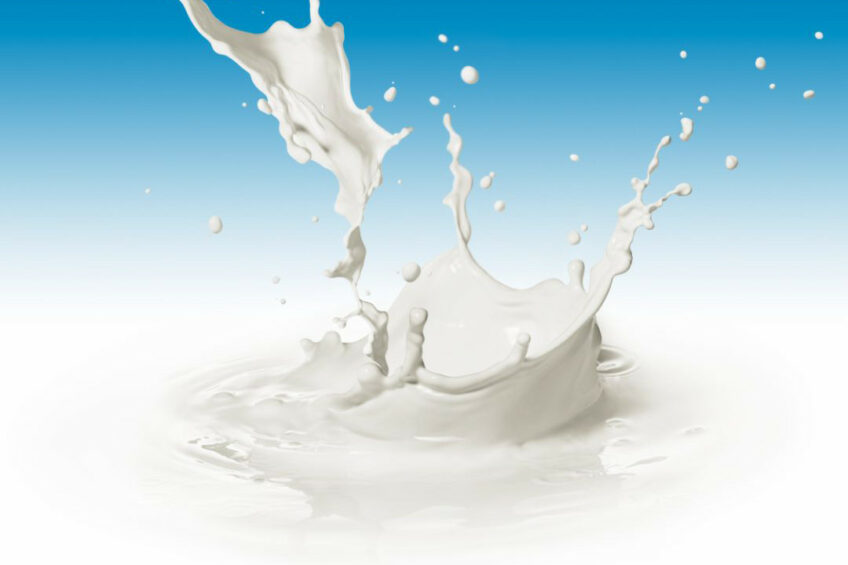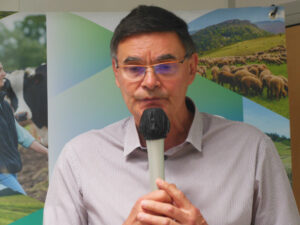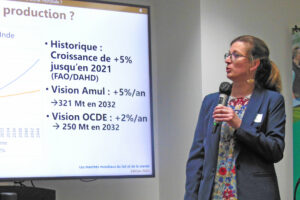World dairy markets: From the US to India

This year’s Idele conference on global dairy and beef markets, held in Paris, France, explored the important topics of growth, consumption and outlooks for the coming months.
At the Idele (the French Livestock Institute) conference, in his presentation entitled ‘World dairy markets, 2023 in retrospect and 2024’ Gérard You, head of economy at Idele, said that global growth in milk production was moderate in 2023: 950 million tonnes, up 12 million tonnes or 1.3% compared to 2022. Asia is responsible for the majority of global growth (+10 million tonnes), but relatively less than in the period from 2010 to 2023 (75%), far ahead of Europe (10%) and North America (8%).
Global milk production
“Most of the growth occurred as close as possible to demand,” added You, who presented a contrasting evolution of the main producing countries. While EU-27 milk production increased by only 0.3% in 2023 compared to 2022, milk production in China increased by 7.1% and in India by 2.5%.
Production in 6 main exporting basins (Belarus, Argentina, Australia, New Zealand, the US, EU-27) grew in the first half of 2023, up 0.9% on 2022, then output in the second half of the year decreased in almost all these countries, hence an almost stable annual collection from these 6 surplus countries, up 0.2% on 2022.
As for the producer price of milk, it increases in France (€471/1,000 litres or +6%/2022), but decreases sharply in New Zealand (€344/1,000 litres or -22%/2022) and in the US (€430/1,000 litres or -22%/2022).
The price of dairy ingredients declined in 2023 (-22% for butter, -31% for low-fat powder), and remained relatively expensive.
International trade in dairy products was an estimated at 88 million TEL (tonnes of milk equivalent) in 2023, a slight drop of about 1 million TEL compared with 2022. Just 3 exporting countries account for 68% of international trade in dairy products: the EU-27 (increasing, to 26 MTEL), New Zealand (increasing, to 20 MTEL, and the USA (decreasing to 13 MTEL).

The top 3 countries importing dairy products (China, Mexico and Algeria) absorbed nearly 25% of international trade, while Asia absorbed 56% of trade. However, global trade in dairy products showed a decline in value (-9% compared with 2022) reaching €73 billion in 2023 due to the drop in prices of dairy commodities (butter, milk powders).
Europe exported products with higher added value than New Zealand (€1,085/TEL for the EU-27 compared to €680/TEL for New Zealand). The European Union’s primary export products are cheeses, whey powders, infant milks and re-fatted milk powders.
Global dairy outlook 2024
The global dairy market outlook for 2024 is mainly marked by uncertain global demand. “Growth in milk production has stopped in Europe and the United States, with demand showing signs of weakness in China and milk margins still offering few incentives in surplus areas,” summarised You, who sees the year 2023 as moderately quiet for dairy products.
India: A global dairy actor?
In her speech entitled “Can India become a more important global player“, Marion Cassagnou from ATLA added that India is the world’s leading producer of milk, with a production of more than 200 million tonnes of milk produced by 70-80 million producers. This production is spread over 3 markets: self-consumption (46%: 95 million tonnes), the informal market (29%: 60 million tonnes) and collection (25%: 52 million tonnes). The latter is divided between private industrials (approx.16%, or 33 million tonnes) and cooperatives (approx. 8%, or 17 million tonnes).
With historical production having a capital importance on the country’s food security, milk experienced regular growth of +5% per year until 2021. Forecasts are based on growth of 2-5% per year depending on the sources, with production expected to reach 321 million tonnes by 2032 in the most favourable hypothesis.
The herd (around 100 million heads) is mainly made up of crossbred cows and buffaloes, with an average of 1,600 to 2,000 kg/animal/year. Of breeders, 75% have 1-2 cows and hold 40% of the livestock. They are landless workers with limited access to water and land, with the majority of milk being for self-consumption. The category of small owners (from 3-20 dairy cows) own crops and fodder, while farms with more than 20 dairy cows represent only 5% of the herd and less than 1% of breeders.
“54% of India faces high to extremely high water stress,” explained Cassagnou, who added that larger farms with more than 200 cows have emerged since 2000.
Milk consumption shows regular increases, with a young population (a third is under 14 years old), urbanisation and higher incomes.
Indian exports of dairy products involve modest volumes which vary greatly from one year to the next. “There is a strong political will to export, but the country will have to open its borders to imports,” she stated. Indians are hyper protectionist and dairy cooperatives are strongly supported by the State, which limits private manufacturers’ development policies, and foreign companies in particular.

China: A worrying economic situation
In his presentation entitled ‘Suproduction crisis in China’, Jean-Marc Chaumet from CNIEL focused first on the lower level of demand from Chinese consumers following the Covid-19 pandemic. “With a weakened real estate sector, high youth unemployment and a decline in GDP for several years, China’s economic situation is worrying,” said Chaumet, who added, “the average price, purchase frequency and penetration rate of dairy products have all declined while the supply of beef products continues to increase.”
Since 2015, China has aimed to strengthen its food self-sufficiency by increasing agricultural production, which grew by 5% in 2023 compared with 2022. Chinese beef production increased by 22% between 2016 and 2023. The trend is the same for dairy products, with an increase in milk production of 36% between 2018 and 2023 (+6.7% between 2022 and 2023).
“The development of large farms is responsible for this increase in supply, which is not aligned with consumption,” he said, and mentioned that from 2020 to 2022, China has built or planned to build 562 new dairy farms, with a capacity of more than 3.77 million heads, of which 70% are dairy farms with more than 10,000 heads. Moreover, in 2023, China had 164 new farm projects involving 980,000 heads, of which almost 70% are farms with more than 10,000 heads.
With rising production costs and a decline in the price of milk since 2022, the economic situation of milk producers remains worrying. In 2023 and 2024, large dairy farms lost money and the construction of new farms slowed down in 2023. “Today, half of China’s dairy cows are on farms with more than 1,000 heads and the smallest farms are disappearing,” commented the speaker, adding that Chinese imports of dairy products have been declining since 2022.






